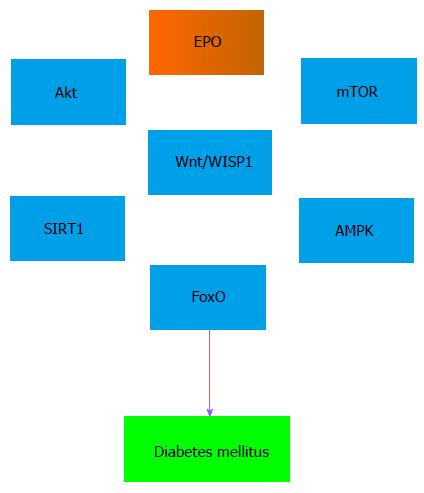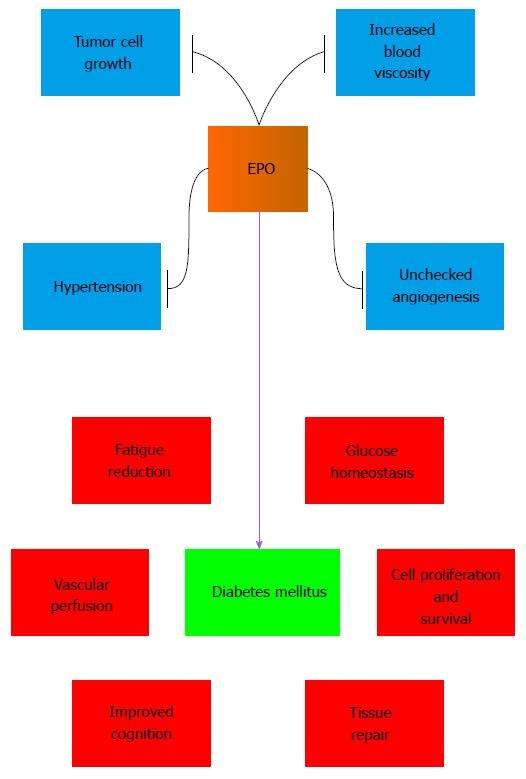Copyright
©The Author(s) 2015.
World J Diabetes. Oct 25, 2015; 6(14): 1259-1273
Published online Oct 25, 2015. doi: 10.4239/wjd.v6.i14.1259
Published online Oct 25, 2015. doi: 10.4239/wjd.v6.i14.1259
Figure 1 Erythropoietin signal transduction pathways that can lead to clinical benefit during diabetes mellitus.
EPO governs a number of signal transduction pathways that involve protein kinase B (Akt), the mechanistic target of rapamycin (mTOR), Wnt and WISP1 signaling, mammalian forkhead transcription factors of the O class (FoxO), silent mating type information regulation 2 homolog 1 (Saccharomyces cerevisiae) (SIRT1), and AMP activated protein kinase (AMPK). EPO: Erythropoietin; Akt: Protein kinase B; mTOR: Mechanistic target of rapamycin; FoxO: Factors of the O class; SIRT1: Silent mating type information regulation 2 homolog 1 (Saccharomyces cerevisiae); AMPK: AMP activated protein kinase.
Figure 2 Targeting erythropoietin involves a balance that fosters clinical improvement over clinical disability.
EPO can play a significant role in reducing disability and fostering clinical benefit during diabetes mellitus. Through its signal transduction pathways, EPO may improve organ and tissue function, reduce fatigue, improve vascular perfusion, maintain glucose homeostasis, assist with wound and tissue repair, and promote cellular proliferation, differentiation, and survival. However, the detrimental effects of EPO that can include tumor cell growth, hypertension, increased blood viscosity, and unchecked angiogenesis must be considered and eliminated for successful therapeutic treatments against diabetes mellitus. EPO: Erythropoietin.
- Citation: Maiese K. Erythropoietin and diabetes mellitus. World J Diabetes 2015; 6(14): 1259-1273
- URL: https://www.wjgnet.com/1948-9358/full/v6/i14/1259.htm
- DOI: https://dx.doi.org/10.4239/wjd.v6.i14.1259










